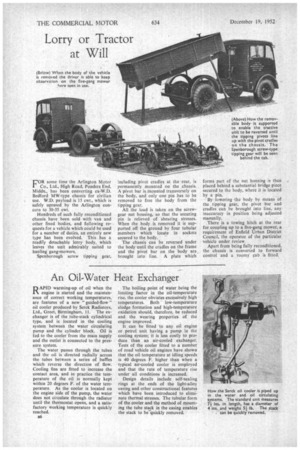An Oil-Water Heat Exchanger
Page 40

If you've noticed an error in this article please click here to report it so we can fix it.
RAPID warming-up of oil when the engine is started and the maintenance of correct working temperatures, are features of a new " guided-flow " oil cooler produced by Serck Radiators, Ltd., Greet, Birmingham, 11. The exchanger is of the tube-stack cylindrical type, and is located in the cooling system between the water circulating pump and the cylinder block. Oil is fed to the cooler from the main supply and the outlet is connected to the pressure system.
The water passes through the tubes and the oil is directed radially across the tubes between a series of baffles which reverse the direction of flow. Cooling fins are fitted to increase the contact area, and in practice the temperature of the oil is normally kept within 20 degrees F. of the water temperature. As the cooler is located on the engine side of the pump, the water does not circulate through the radiator until the thermostat opens, and a satisfactory working temperature is quickly reached.
sib
The boiling point of water being the limiting factor in the oil-temperature rise, the cooler obviates excessively high temperatures. Both low-temperature sludge formation and high-temperature oxidation should, therefore, be reduced and the wearing properties of the engine improved.
It can be fitted to any oil engine or petrol unit having a pump in the cooling system; it is less costly to produce than an air-cooled exchanger. Tests of the cooler fitted to a number of road vehicle oil engines have shown that the oil temperature at idling speeds is 40 degrees F. higher than when a typical air-cooled cooler is employed and that the rate of temperature rise under all conditions is increased.
Design details include self-sealing rings at the ends of the light-alloy casing and other constructional features which have been introduced to eliminate thermal stresses. The tubular form of the cooler and the method of mounting the tube stack in the casing enables the stack to be quicklyremoved.




















































































